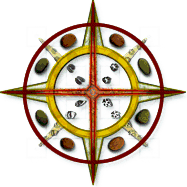Training to be the very best - Wildlife Handling & Immobilization
- Sultana Majid

- May 13, 2018
- 3 min read
Updated: Aug 17, 2021
Hello all!
Thanks for tuning in today. Quick few questions for you to get started! Do you know the differences between anesthetics, sedatives and tranquilizers? Does the phrase TPR ring a bell? What is sternal and lateral positioning? Two of our TWS-UBCO members can help answer these questions, as they had the opportunity to recently attend a “Wildlife Chemical Immobilization and Handling for Wildlife Professionals” course. This 3 day course (April 24-26, 2018) was held at the Lethbridge College, and was presented by Global Wildlife Resources (GWR). They were honored, along with other students across North America, to be instructed by two senior and well accomplished wildlife veterinarians. Dr. Mark R. Johnson DVM, the founder of GWR and an Affiliate Faculty of the University of Montana, provided his expertise from countless field operations, in conjunction with Dr. Marc Cattet DVM, PhD, an Adjunct Professor at the University of Saskatchewan and founder of RGL Recovery.
This course was jam packed with in class details covering; field operation preparation, legal responsibilities, immobilization drugs, drug calculations, marking and sampling techniques, veterinary emergencies and human safety. Our members learned that anesthetics create an unresponsive state, while tranquilizers and sedatives calms the animal. Sedatives though depress the central nervous systems and tranquilizers don’t. Students were also given the opportunity to practice critical technical skills with well-organized lab sections. They became familiar with needle and syringe skills, drug delivery systems (i.e. dart guns), patient monitoring through TPR (Temperature, Pulse, Respiratory), animal positioning (lateral, along the animal’s side, or sternal, with the animal laying on their belly and head upright), all directed by the welfare of the animal.
At the end students were able to apply what they had learned in class and practiced in the labs with hand-injection chemical immobilization of domestic goats, to simulate deer handling. This was a great opportunity to experience animal chemical immobilization firsthand in a safe and controlled environment. There were trained veterinarians onsite to ensure safety for both animals and humans, while encouraging students to apply their knowledge and, as a group, lead their own immobilization operation. It was also a great opportunity to give back to the goats with a little manicuring (trimming) of their hooves during the lab. (Disclaimer: no animals or humans were injured during the course).
--- We’ve interviewed one of our members, Dina Bernie, to get her thoughts and summary of the course: ---
What were your expectations going into the course?
I had a good idea of what to expect from the course as there was detailed information on the Global Wildlife Resources website. As I expected, it was a jam-packed three days of in-depth information from experienced professionals.
Did the course meet these expectations?
I felt that the course was suitable for a range of learner backgrounds, from a university student such as myself, to a wildlife professional. I liked that everyone could ask as many questions as they wanted, and the instructors were friendly, accommodating and enthusiastic themselves. There was also strong attention to animal welfare throughout the course, which was a welcome surprise. It proved to me the level of professionalism of the instructors.
What was the highlight for you?
The highlight for me was the ability to work hands-on with the animals and equipment, as well as meeting other people in the field of wildlife research and work.
What are your hopes/next steps after receiving this training?
My hopes are that this certification will help me to get into wildlife and animal care work, as I now have an unusual yet highly useful qualification and experience.
Has your way of thinking, in relation to wildlife field operations, changed after this course? If so how and why?
This course has changed my way of thinking of how wildlife work is conducted. The realities of the work, both pretty and ugly, were explained, and learning the process of handling and immobilizing wildlife has helped me to see where I could fit in that field of work and whether I would enjoy it.
Can you tell us what you think the greatest strength(s) of this course was for you?
I would say that the greatest strength of this course was it having two teachers who provided double the experience, expertise and knowledge. Also, the constant considerations to animal welfare, ethics and safety were a strong point.
--The end?--
Now these two members hold a training certificate and are rearing to tackle their next exploration into the wildlife profession. We want to celebrate these moments and accomplishments of our TWS-UBCO members! If you’ve had a cool experience, life-changing or even just a small stepping stone forward, we would love to share your story! Don’t hesitate to email and connect with us!

** Check out the Global Wildlife Resources’ Facebook Page & Website


































Comments